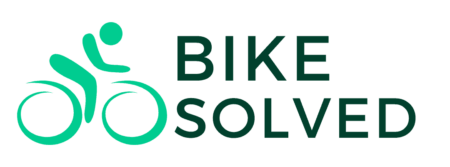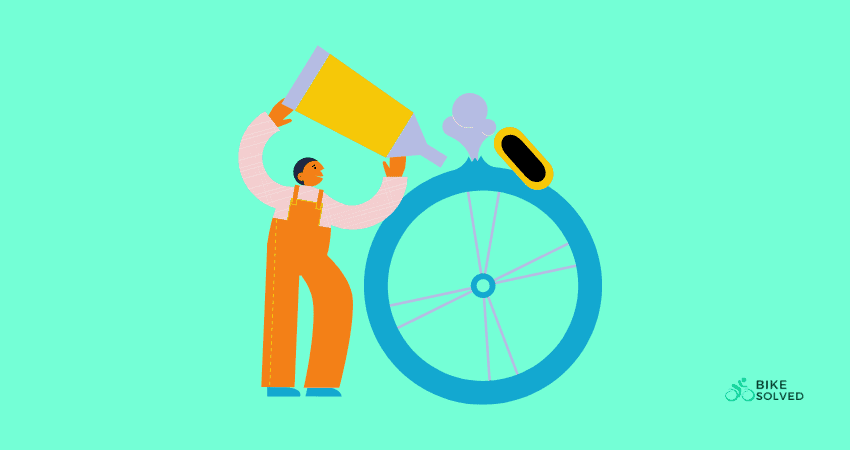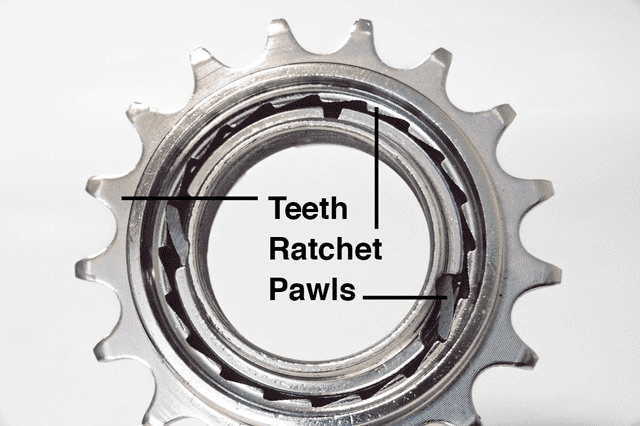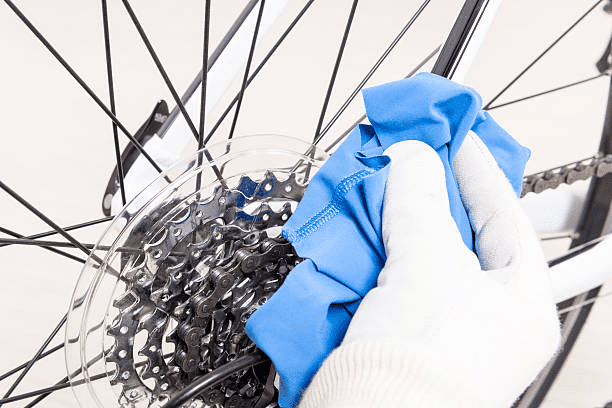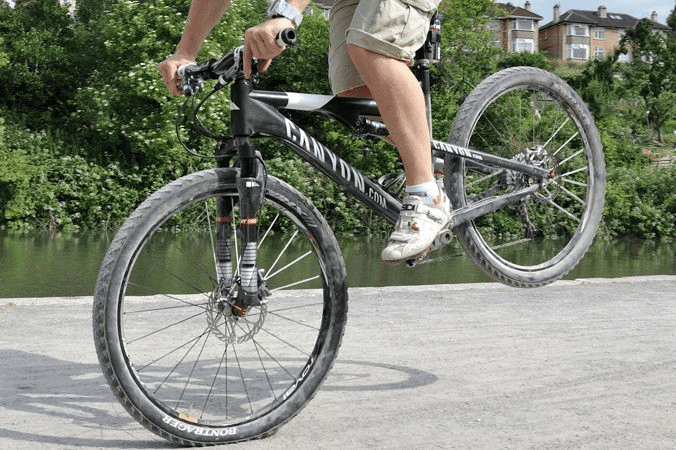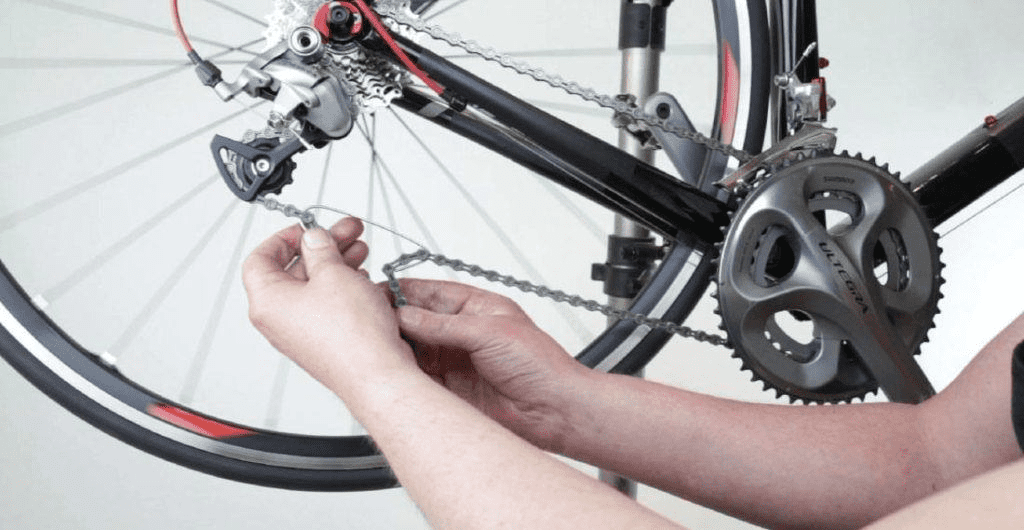Have you ever felt an off-putting ticking type of sound while you’re riding your bicycle? This noise may be much more noticeable while coasting or pedaling your bike backward. This might even cause you to wonder if your bicycle has some defect. However, you can take a chill pill because your bike isn’t really broken.
What you hear while coasting is just a clicking sound produced by the pawls of your bike, which allow it to move forward even when you are not pedaling. Although this bicycle-clicking noise is normal, it may not be very pleasant to your ears. In fact, it can get disturbing when heard repeatedly.
Immoderate jolts and excessive noise, which keep getting louder, may signal a damaged freewheel. Whatever the case may be, you can only work towards fixing it after being aware of the exact reasons behind bicycle clicking noise when coasting. Let’s try to understand these factors to minimize the bicycle-clicking noise!
Bikesolved.com is readers supported, you may find Amazon affiliated links on this page, that pays us commission for recommending products at no extra cost to you.
Why does your bike click while coasting?
Unlike fixed gear bikes, you will notice that your bicycle keeps moving forward even when you rest and stop pedaling. Ever wondered what components have made it possible? How could the disturbing clicking sound possibly be related to these components?
The answer lies in the free hub of your bicycle. It is a component that involves the wheels of your bicycle while you pedal forward. The moment you stop pedaling, this system will disengage, and you will continue to move forward. This hub connects the wheels of your bike with the pedals via chain. The bicycle-clicking noise you hear is generated by the pawls of your bike lying between the hub and your bicycle’s freehub body.
These are the specific components that facilitate coasting through the ratchet mechanism. When you stop pedaling, these spring-loaded pawls remain stable while the wheel continues to move. They will slide freely on the cog, producing the clicking noise. When you begin to pedal again, these teeth-like structures will firmly grab the hub and spring back up. You might feel this ticking sound gradually increasing.
This may be possible because of increased tension on the pawl. Due to this, the pawls will strike the cog with firm intensity, leading to a louder clicking noise. The more the number of pawls in your bike, the higher this clicking noise will be when the wheel moves.
Therefore, this pawl and ratchet mechanism is the reason behind your bike’s clicking noise. Although these unwanted sounds do not indicate the poor quality of your bicycle, you may want them to go away.
How to fix this clicking noise when coasting?
If your bike makes a ticking noise while coasting, you may be required to focus on its maintenance. If you are someone who absolutely loathes disturbances, you can go for silent hubs to completely stop bicycle-clicking noise. That will let you have a relaxed and silent ride. However, as discussed before, excessive noise may indicate a faulty freehub body
that cannot be fixed through maintenance. You can follow up on the steps I have researched and articulated to eliminate this commotion.
1. Cleaning and maintaining the components
Cleaning the components, applying grease, and lubricating them can marginally minimize the sound. Regularly following up on these steps will prevent further damage to your freewheel.
Following a proper bike maintenance routine from day one can minimize the probability of your freewheel getting damaged in the future. However, it may not be possible to completely eradicate the possibility of it getting worn out.
2. Exchanging the original freewheel or its parts
In case you feel your freewheel is damaged to the extent that it cannot be fixed by cleaning its components alone, you may consider letting go of your old freewheel and swapping it with a new one. For this purpose, you would require a removal tool, lubricant, degreaser, and an adaptable wrench. You can begin by uninstalling the freewheel to clean its components.
While you are in the process, do not forget to examine other parts of the freewheel, including pawls. If found defective, immediately replace them with new ones. If not, you can just continue with your regular cleaning and install those parts back in the freewheel. You can follow the following steps to remove the freewheel:
- Carefully remove the wheel by quickly releasing the lever.
- Release the screws from the wheel using a freewheel removal tool by clasping the tool on these nuts and rotating it until they disintegrate.
- You can then proceed to remove the freewheel from your bicycle’s wheel.
- Use a degreaser to clean it. A spray would be much more convenient as it will easily reach every corner. You may use soap water instead of a degreaser, but it won’t work as effectively.
- Finally, use a good lubricant on your freewheel
After properly checking and replacing the old parts and cleaning your freewheel, you would be required to reinstall the freewheel. You can follow up on these reinstallation steps if you need to change your freewheel.
- Pay attention to the number of cassettes your bicycle has and their type to be able to choose the best freewheel.
- After selecting, lubricate the new wheel and thread it on your bicycle’s wheel.
- While following the previous step, ensure the cog is aligned correctly in the center of the wheel and is fully threaded.
- Reinstall the wheel, grab the brake lever and tighten the cassettes by pedal pressure or via the chain.
- Ensure that the screw settings and disc brakes are perfect. Once done, you are set to go!

3. Tightening the breaks
It is possible for an unpleasant sound to be generated while coasting if your bicycle breaks become loose over time. Make sure to fix them to eliminate such a possibility.
4. Bike chain and pedals
Your bicycle can create unwanted clicking noise while coasting if the chain and pedals are not smooth enough. Spokes and pedals must not feel loose. You should tighten them and apply grease and a suitable lube regularly to avoid any disturbance getting generated from these components. Depending on the season, you can use wet or dry lube. Dry lube is best suited for dry weather.
Conclusion
The clicking noise your bicycle makes when coasting should not worry you. It does not necessarily indicate that something is wrong with your bike and is quite normal. They are a result of the freewheel mechanism and are induced by pawls. Because of these components, you can take a break from pedaling while your bike continues to move forward.
However, you may be one of those cyclists who prefer silent rides with no disturbances. In some cases, the freehub body getting worn out can also be the reason for loud clicking noises that would require fixing. If necessary, you can minimize and even eliminate these disturbances with regular maintenance, cleaning, swapping components, or even the entire freewheel.
You can watch the video guide here:
FAQs
Why does my bike Keep clicking when I pedal?
Your bike keeps clicking while pedaling or coasting because of pawls. Even while pedaling backward, your bike might click. When you stop pedaling, these spring-loaded structures remain stable while the wheel keeps moving.
They firmly strike the cog, producing clicking noise. More pawls on your bike will lead to more noise. However, in case of excessive noise, your freewheel may have been damaged. Some unwanted sounds are also created due to loose breaks, chains, and pedals.
Why does freewheel click?
While riding bicycles, freewheel clicks because of spring-loaded components called pawls or hub-teeth. When you stop pedaling, the pawls disengage themselves while the wheel moves freely. This allows your bicycle to move ahead but prompts the freewheel to click when the pawls strike the cog.
Why is my bottom bracket clicking?
Your bottom bracket may click because of coasting or corrosion. An ungreased seat, seat post, and pedals that haven’t been lubed can cause clicking sounds in the bottom bracket of your bicycle. However, it could also be something as simple as the pawls of your bike that click when you stop pedaling, making your bike move forward because of the ratchet mechanism.
